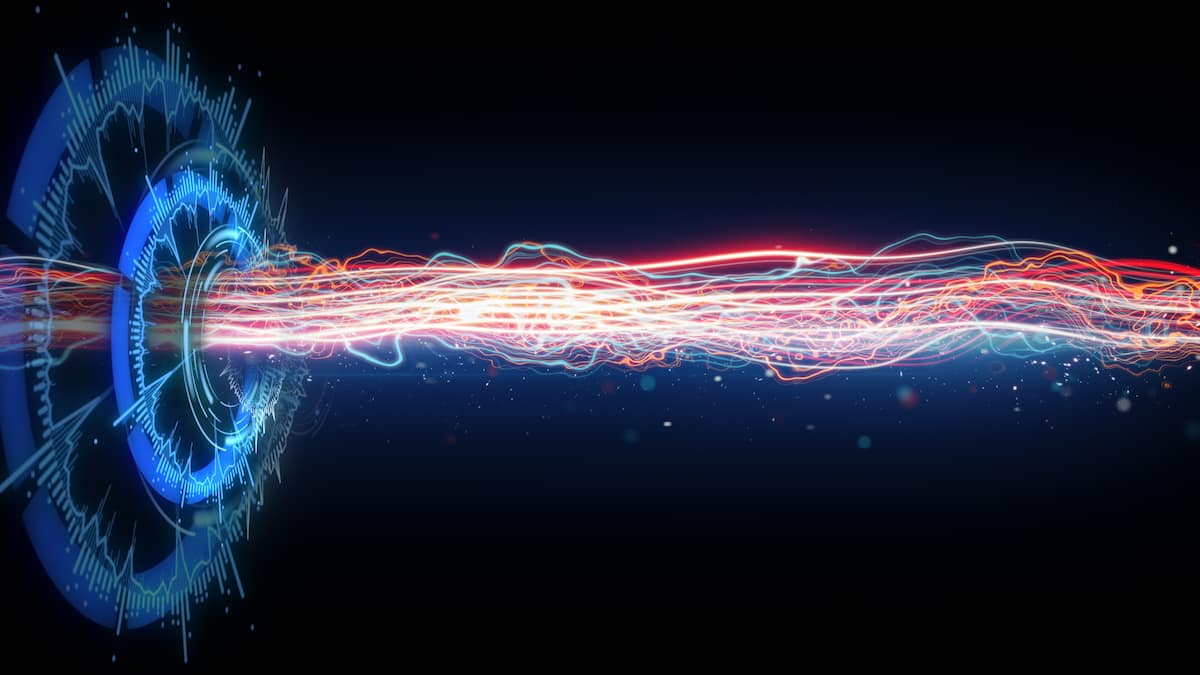
Quantum Mass Spectrometer | Beam me up!
We’re delighted to announce that we’ve reached a significant milestone on our journey to developing a new trace analysis technique.
Our novel instrument exploits the interaction between a beam of ions that are accelerated through a vacuum and highly tuned lasers. Our team have successfully delivered the first ions to the end of the instrument.
A key step in commissioning a new spectrometer is the process of tuning ions from their source to the end of the instrument. It is always a reassuring moment when ions can be delivered to the final detector and a signal can be observed.
The commissioning process starts with the ion source, which is the beating heart of any mass spectrometer. The performance of the machine, its capability and capacity to deliver science will have a lot resting on having an optimized ion source.
“It has taken some time to get our ion source working optimally and to tune the beamline voltages such that the resulting ion beam will reach the detector. Understanding the relative impact of changing the voltage on each lens and steering element, with the aid of some simple simulations, has been crucial. I was very happy when we finally measured ions on the detector, as this represents an important milestone in the commissioning of this instrument, and is a good indication that all elements in the beamline are working as they should be.” – Holly Anne Perrett, Team Leader
The mass spectrometer Artemis Analytical is developing uses a laser-based method to enhance sensitivity sufficiently to allow rare isotopes such as 14C and 85Kr to be detected. These isotopes have natural abundances of one part per trillion or less, which requires a very intense initial ion beam. Even at moderate ion speeds, there will be enough to make components get very hot (and even melt) if the beam hits them. Therefore, before using intense beams the first step of the commissioning process uses an intermediate intensity ion source, which produces 1/1000th of the final beam current before scaling the system up to the maximum intensities.
We have utilized a device called an electron impact gas ion source that produces beams of argon or krypton for commissioning the instrument. A controlled leak of gas is bled into the ion source to produce almost a trillion ions per second for the commissioning process. The ions are accelerated through a voltage of approximately 1000V and then directed through the vacuum chambers. At these energies, it is possible to use static voltages applied to electrodes.
The process of manipulating the ions is similar to manipulating light with mirrors and lenses and hence the components within a spectrometer are referred to as “ion optics”. To finally deliver the beam to the end of the spectrometer requires adjusting over 25 individual power supplies connected to the ion optic elements to bend and focus the ions.
The first-time ions are accelerated and directed through the instrument is a fiendishly complex puzzle, which is made much harder because unlike manipulating light with optics, there are no visible cues to where the beam is going when it is no longer detected.
Trackback from your site.


